Moderate overlap front: original test
Rating applies to 2000-06 models
Tested vehicle: 2000 Nissan Sentra GXE 4-door
The Nissan Sentra was redesigned for the 2000 model year.
| Evaluation criteria | Rating |
|---|---|
| Overall evaluation | |
| Structure and safety cage | |
| Driver injury measures | |
| Head/neck | |
| Chest | |
| Leg/foot, left | |
| Leg/foot, right | |
| Driver restraints and dummy kinematics | |
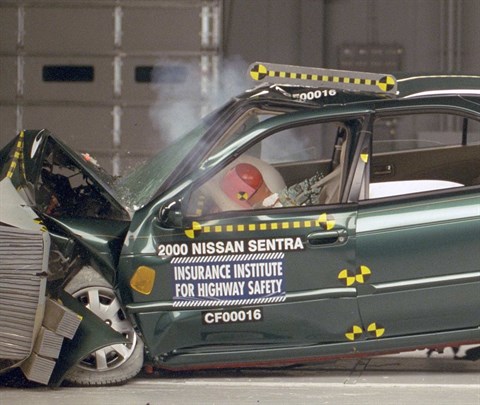
Action shot taken during the frontal offset crash test.

The dummy's position in relation to the steering wheel and instrument panel after the crash test indicates that the driver's survival space was maintained reasonably well.
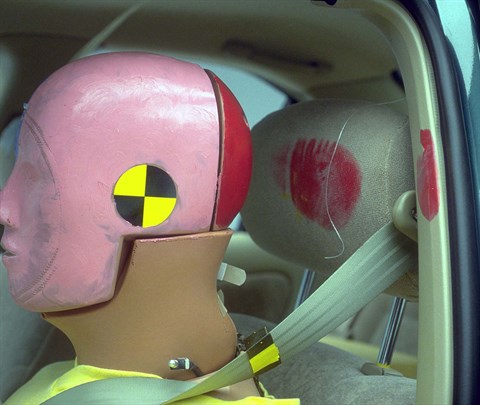
Smeared greasepaint indicates where the dummy's head hit the B-pillar during rebound, producing a high head acceleration.
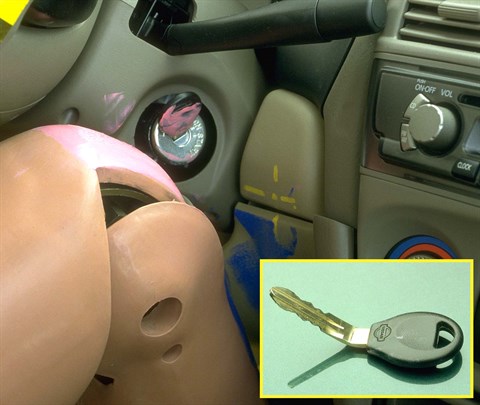
Smeared pink and blue greasepaint shows where the dummy's right knee and shin hit the ignition key and knee bolster. The key was bent during the impact (inset).
Side: original test
Rating applies to 2000-06 models
Tested vehicle: 2004 Nissan Sentra 1.8 S 4-door without optional side airbags
The Nissan Sentra was redesigned for the 2000 model year.
| Evaluation criteria | Rating |
|---|---|
| Overall evaluation | |
| Structure and safety cage | |
| Driver injury measures | |
| Head/neck | |
| Torso | |
| Pelvis/leg | |
| Driver head protection The dummy's head was hit by the intruding barrier, producing high head injury measures. | |
| Rear passenger injury measures | |
| Head/neck | |
| Torso | |
| Pelvis/leg | |
| Rear passenger head protection The dummy's head was hit by the window glass, window sill, and pillar behind the rear passenger door, producing moderately high head injury measures. | |
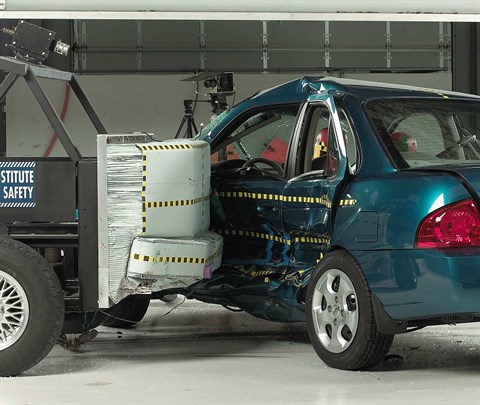
View of the vehicle and barrier just after the crash test.

View of the vehicle after the crash with doors removed, showing damage to the occupant compartment.
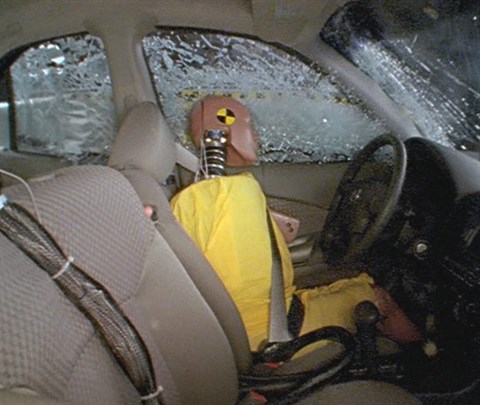
Action shot taken during the side impact crash test showing the driver dummy's head being hit by the intruding barrier.
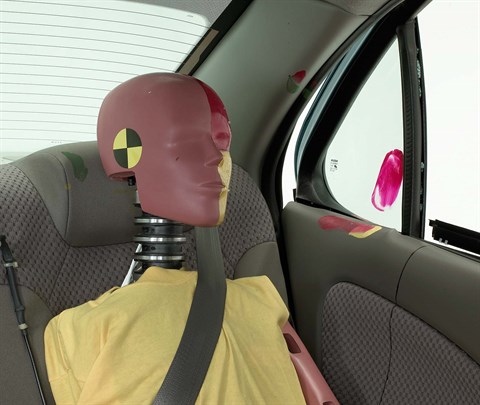
Smeared greasepaint shows where the rear passenger dummy's head was hit by the window glass and window sill of the rear passenger door and by the pillar behind the door.
Head restraints & seats
Seat type: Base seats
| Overall evaluation | |
|---|---|
| Dynamic rating | |
| Seat/head restraint geometry |
About the head restraint & seat test
Currently, IIHS tests apply only to front seats.
